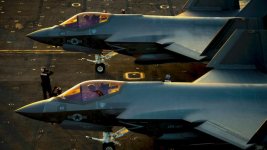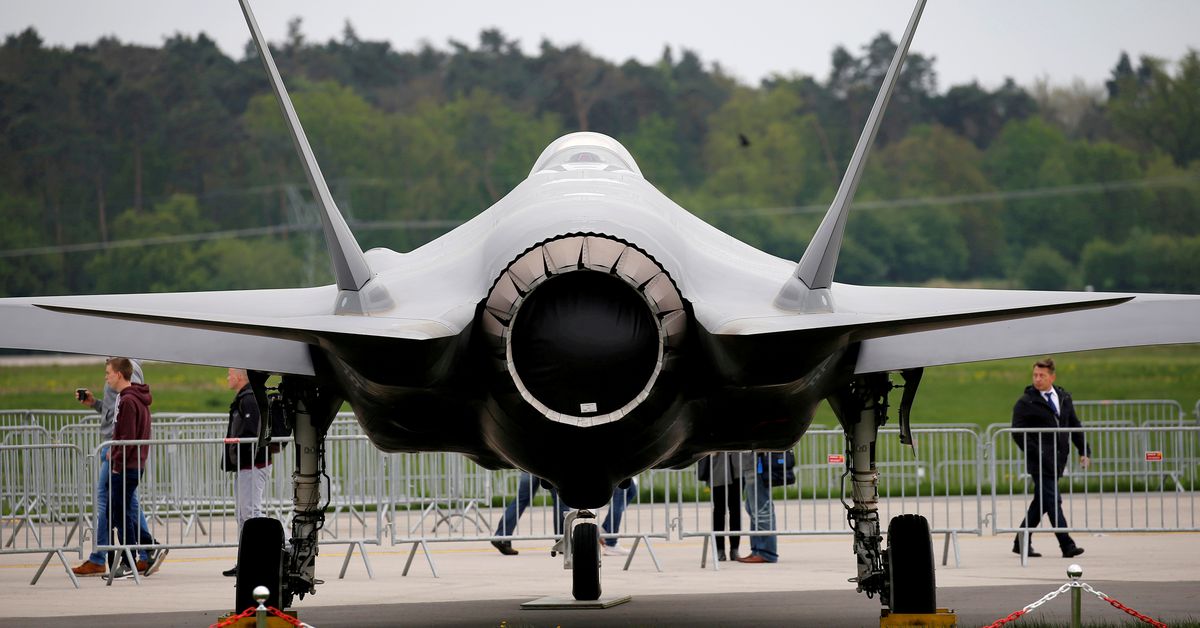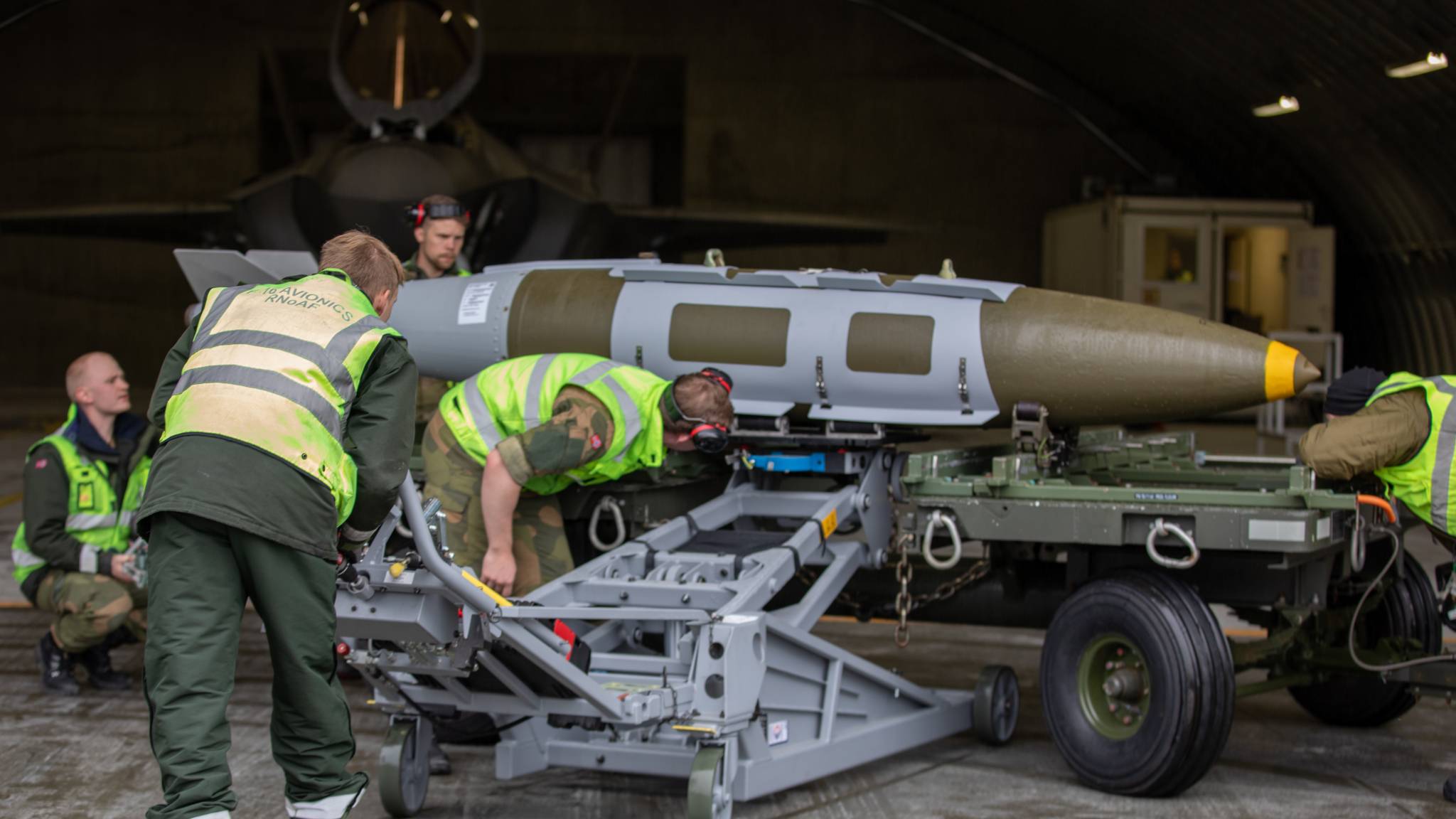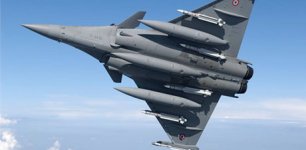Translated with www.DeepL.com/Translator (free version)
As Beijing and Moscow focus their budgets on the development of interdiction bubbles, hypersonic weapons, and space-based weapons, Western military projection capabilities are dangerously challenged. This context only reinforces the role of operational stealth platforms (F-22, F-35, B-2, J-20, Su-57) and above all bombers (American B-21, Russian PAK DA, Chinese H-20) to destroy by surprise strategic sites.
Myths and realities of stealth
Symbolising Western technological superiority, the first American F-117 stealth aircraft, which entered service in the greatest secrecy in 1983, was revealed to the general public in 1991 during the Gulf War, when it was presented as the ultimate weapon. Its angular and faceted profile, combined with the use of composite materials and a coating that absorbs electromagnetic waves, divides its radar signature by a thousand, reducing it to the equivalent of a golf ball.
However, afterwards, two events were to alert certain military experts. In the early hours of the offensive on Iraqi territory in 1991, a deep raid by a squadron of Apache AH-64s destroyed three Soviet ground radars considered totally obsolete: a P-18 Spoonrest and two P-15 radars. The intended effect of this raid, when the Iraqis were equipped with far more capable devices, was never justified. But seven years later, in the midst of the campaign against Kosovo, Serbian forces, equipped with the same P-18 radar, succeeded in destroying an F-117, the wreckage of which was shown to the press. In fact, the Americans had been aware for several years that their stealth aircraft had a major vulnerability, and were informed that the Russians had also discovered it. In the summer of 1991, just after the election of Boris Yeltsin, the Americans abruptly interrupted the flight-testing campaign of the first two prototypes of the B-2 Spirit strategic bomber, to make major modifications that would significantly delay the programme.
Using the immutable laws of physics to counteract Western technology, Soviet researchers soon discovered the flaw in the F-117. When the wavelength used by a radar is a multiple of the aircraft's wingspan, the energy transmitted by the radar creates an induced current that will then radiate in all directions without being able to be controlled. These wavelengths are between 1 m and 3 m, i.e. those of the Russian radars of the 1950s and 1960s operating in the VHF frequency band (30 to 300 MHz), which were sold on a massive scale to developing countries.
The return of UHF-VHF radars...
These frequencies were the first to be used when military radars appeared. However, their poor angular resolution and low-flying target detection capability led manufacturers to move to higher frequencies to increase the accuracy needed to engage aircraft. Thus, when stealth work began in the United States in the 1970s, the Soviets had search and acquisition radars operating in S-band (1.5 to 3.9 GHz) or X-band (6.9 to 10 GHz) for the SA-2, SA-3, SA-4, SA-5, SA-6, SA-8, SA-10 and SA-12 ground-to-air systems. For stealth as well as for electronic warfare or anti-radar missiles, the West therefore focused only on these frequency bands. After their discovery, the Russians equipped their old radars with modern electronics in order to detect and then track a stealthy aircraft at a minimum distance of 100 km, to serve as mid-course guidance for ground-to-air systems or interceptor aircraft. They install them on crossing vehicles to provide a multi-layered system that is constantly on the move and thus able to evade enemy strike plans.
Over the years, the NNIIRT group has developed a whole range of systems to cover the entire threat. Let's mention the Rezonans-NE with a range of 350 km, the 2D Vostok-E radar with its folding panel antenna, the imposing 3D Nebo-UE radar that supports the S-400 system or the Nebo-SVU with a shorter range; but also the Barrier-E, often deployed at the edge of the forest to track aircraft and cruise missiles flying at very low altitude (up to 30 m) to escape radar coverage, and this, according to the manufacturer, with an accuracy of 80 m up to 450 km away, as well as, since 2006, the Voronezh family of UHF early warning radars. With a fixed 100 m long antenna, they are capable of tracking more than 500 targets (satellites, ballistic missiles, stealth bombers) at more than 6 000 km. Four are now operational and six more are under construction.
The Chinese have the world's densest network of VHF radars along the entire coast of the China Sea. This includes models such as the 2D JY-26 radar with its active modules specifically designed to counter the F-22, or the 3D JY-27A radar derived from the Russian Nevo-SV and deployed near Chengdu. Other models complete this system such as the YLC-8B, the SLC-7, the SLC-12, the JYL-1A, and the HK-JM range. Iran has also acquired this capability with the Russian Kasta-2E2 radar, but also by developing the Matla-ul-Fajr 3D radar presented in 2010 and with an announced range of 480 km up to an altitude of 20 000 m. Jamming these radars has become increasingly complicated due to their extensive use of frequency evasion tactics.
Some Western manufacturers then explored the possibility of offensive jamming. But the Russians, in response, came up with bi- and multi-static radars whose mobile and redundant (and therefore identifiable) transmitting antennas are separated from the receiving antennas (passive and therefore undetectable) by distances that can reach hundreds of kilometres. It is easy to understand why the B-2 bomber programme was halted for several years. The wings were in fact completely redesigned to offer a large section (the famous "Batwings") allowing the installation of pylons equipped with insulators inside the wing to prevent any resonance phenomenon. This device is now integrated into the F-22, J-20 and Su-57, but there is another way of detecting them.
... and short-wave radar
In order to increase the range of radars, low frequency bands have been explored. Short waves (0-30 Mhz) reflect off the ionosphere and therefore have a much greater range than other frequencies, which propagate in a straight line. Just after the Second World War, the Russians and Americans experimented with prototypes capable of reaching 3 000 km. But the American-British Cobra Myst or the Russian Duga-1 had mixed results. Sensitive to interference and with too low a resolution, they often confused icebergs with surface vessels. But in the mid-1990s, the computing power of computers made it possible to process the signal efficiently and make these devices more accurate. The movements of the ionosphere generate considerable noise, which significantly affects the quality of the signal received. A new generation has thus been created with the American ROTHR and the Russian Container (1 ). But above all, the French prototype built by ONERA, the Nostradamus, succeeded in detecting a B-2 stealth bomber flight in June 1998 during a mission in Kosovo and demonstrated that shortwave was capable of resisting breakdowns. to escape UHF/VHF radars. This performance is said to have prompted Singapore to acquire it.
The Australians also relied on this technology at the request of the Commonwealth. Launched in the early 1970s, the project was plagued by delays until Lockheed Martin and Germany's Rhodes & Schwartz joined forces in the late 1990s. The Jindalee is a multistatic radar system controlled from RAAF Base Edinburg in South Australia, with three sites spread over the Australian territory (Longreach, Leonora and Alice Springs) which, thanks to interferometry, gives it a virtual antenna several hundred kilometres wide, the performance of which is boosted by the quality of reception provided by the desert expanses, as well as by its ability to compensate for ionospheric movements in real time. With a range of more than 4,000 km to detect the arrival of air and naval platforms from the north and a surveillance area estimated to be 1.7 times the size of Australia, it is currently the most powerful OTH radar. Its accuracy is such that, according to some former operators, it is able to classify detected objects by evaluating their size (2), or to identify the take-off of air platforms. All the receiving antennae are synchronised here thanks to an atomic clock, and the system's supercomputer can measure with extreme precision the delay with which each of the antennae receives the echo sent back by the target. This delay makes it possible to deduce the location of the target by triangulation. This strategic system has a new budget of 1 billion euros allocated to BAE Systems to further improve its performance.
China has also had such a capability on its coastline since 1967. There are at least five OTH radar sites (Doumen, Shanquian, Qian Sanzao, Shayuan, Cuarteron) and two others for direction finding (Zhang Jiayingcun, Fiery Cross). In Iran, experiments began in 2004. From 2009 onwards, the Pasdaran responsible for anti-ballistic warfare and surveillance of the air identification zone approached the Air Defence Force (IRIADF). After a first prototype built at the end of 2009 on the Qods air base for surveillance of the Persian Gulf, a second OTH, called Ghadir and covering more than 1,100 km, was erected in 2012 near the city of Garmsar. Equipped with four 39-metre long antennas and a central Yagi mast, it provides 360° coverage of Iraq, south-eastern Turkey and north-eastern Saudi Arabia.
In 2014, a third one appeared near the city of Ahvaz in Khuzestan province. The influence of the Russian Rezonans-NE radar is giving way to a new generation called Sepehr ("Cosmos"), the first of which was installed in 2013 near the city of Bijar in Iranian Kurdistan. With a range of 3,000 km, it radiates as far as Tallinn, Sicily and Djibouti.
In September 2018, Iranian television broadcast images of a radar of a form hitherto unknown in this country, but close to Chinese developments, and consisting of 14 masts several tens of metres high. The images clearly show 'log periodic' antennas arranged in phase and in an arc to increase gain and allow direction finding, but also to increase bandwidth and thus promote frequency escape to resist jamming. The vertical polarity of the antennas makes it suitable for the detection of vertical objects such as aircraft fins, surface ship islands, and especially ballistic missiles.
However, despite the tremendous progress made by OTH radars in terms of both range and resolution, shortwaves require a distance of at least 100 to 150 km from their target to reflect off the ionosphere. Below this distance, these radars are plunged into a so-called "blind zone". In addition, the future American B-21 would seek to make itself invisible to shortwave. However, other systems can be used to engage stealth targets and, above all, to provide guidance for terminal weapon systems.
Civilian telecommunications
In recent years, a new family of detectors has appeared on the market: "passive radars". Unlike conventional radars, these do not have transmitters, but use the waves emitted by civilian communication systems such as FM radio, digital television or mobile phone networks. The idea here is to measure the time difference between the signal received directly by the source, whose location is known precisely, and that reflected by the target thanks to a network of totally passive antennas, and therefore undetectable by airborne jamming systems. The distance, azimuth and even the type of platform can then be deduced thanks to an associated signature database.
The forerunner of this system was the Kleine Heidelberg radar built by Telefunken in 1943, which used the waves emitted by British radars visible from the French coast to detect RAF aircraft. The American company SRC, a pioneer in this field, Leonardo with the Aulos, and the German company Hensoldt now offer operational solutions that can be deployed on simple SUVs. However, other players are using this technology to exceed the current capabilities of military radars. Like the Czech company ERA, which, with its Silent Guard, claims to be able to locate targets hidden under vegetation, or the Finnish company Patria, with its MUSCL system, which is capable of identifying and tracking a hundred or so stealthy targets at a distance of several hundred kilometres, including the brand-new Russian KUB mini suicide drones, which are used to infiltrate discreetly into the loopholes left by Western air defence systems in order to damage critical points.
SWIR infrared
But for countries with a large coastline, these passive radars will not be of much use. For the past ten years or so, another technology has been offering spectacular results. In order to equip the U-2 reconnaissance aircraft with new optical capabilities, the Americans have explored "shortwave infrared", or SWIR (3). Between 1 and 2.5 μm wavelength, the resolution and range of infrared sensors are increased tenfold. More importantly, around 1.4 μm, water ceases to be transparent and becomes opaque. All naval or airborne platforms, stealthy or not, made of dry materials in principle, appear here like white dots on a black screen.
Particularly vulnerable to attacks by B-2 bombers, the Chinese have invested considerably in this segment. For while the F-22 and F-35 have undergone significant work to reduce their infrared signature, this thermal discretion would only be effective between 7 and 8 μm... Since 2015, the company A-Star has been presenting its catalogue of SWIR cameras at the arms fairs of "friendly countries" to equip the air, naval and ground platforms made by the Chinese BITD.
But the detection of US stealth bombers is being addressed through a networked approach. Firstly, a wide-field geostationary reconnaissance satellite with a SWIR sensor, the Gaofeng-5, has been monitoring the China Sea since May 2018. Then, a mesh of surveillance ships and aircraft equipped with these sensors will take over to confirm the threat up to a range of 150 km (thanks to the thermal radiation from the nozzles) and direct interceptor aircraft. China's new fifth-generation J-20 fighters are also now equipped with the EOTS-86, an IRST with a SWIR sensor system spread across the aircraft's fuselage to provide a 720° field of view. It will then be able to rely on the PL-10 short-range infrared-guided missiles. The use of this 'SWIR killing chain' allows the aircraft to avoid using its fire control radar to evade detection and electronic warfare devices.
Terahertz and quantum tracks
The Saint Petersburg Institute of Optics (ITMO) and several Chinese DTIB players (SASTIND, CNIGC, CEAP, CASIC, CETC) have in recent months communicated on the development of new airborne sensors that would be capable of imaging the shape of stealth aircraft, revealing metal parts hidden under absorbent materials, but also penetrating vegetation cover and infrastructures to detect troops and equipment. Located between microwaves and infrared, this new generation of sensors emits photons (300 GHz to 3 THz) from a helium-neon laser. As with SWIR, this is a technology that has long been funded by the US. In 2012, a US team from the Rochester Institute of Optics published a paper in the journal Applied Physics Letters reporting on laboratory experiments to demonstrate the feasibility of such an imaging system. The paper was illustrated by an image of B-2 reconstructed with this system (4). However, the atmospheric absorption capabilities of these lasers and the energy required to operate them would mean that they would initially be integrated on battlefield surveillance platforms with at least four engines.
Thus, in December 2018, one month after the presentation to the public at the Zhuhai Air Show of the "quantum radar" (5) produced by CETC, the CASIC Group's Research Institute 23 carried out the first flight tests of a terahertz SAR radar on a Y-8 aircraft attached to the 20th division responsible for battlefield surveillance. The ultimate goal, however, is for both the Russians and the Chinese to equip fighter aircraft with this targeting capability. The Russian electronics manufacturer KRET is already working on such a prototype for the Su-57.
The multitude of these innovations makes the new American B-21 strategic bomber a priority programme for the Pentagon, despite a cost that could reach 80 billion dollars. This cost seems to be justified by the hundred or so platforms that will be produced, but above all by the scale of the technological challenges that its designer, Northrop Grumman, is already facing, as are the European manufacturers involved in the FCAS and Tempest programmes.













